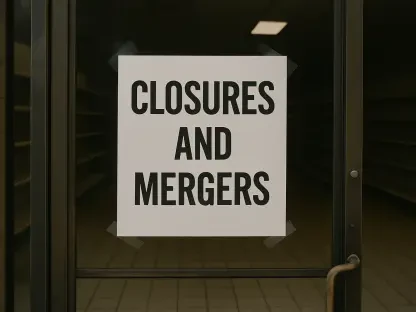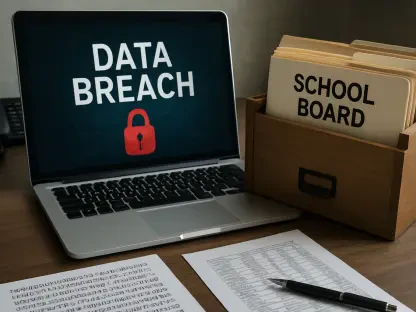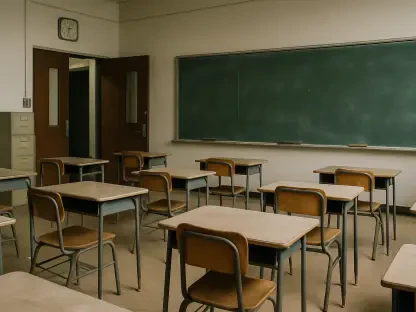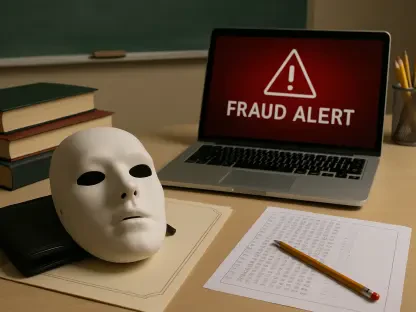Over the past two decades, school choice policies in Indiana have significantly influenced the state’s educational landscape. These policies empower families by allowing public education funds to follow students to various schooling options, including public, private, charter, and home schools. This flexibility aims to tailor educational experiences to individual student needs. However, the effectiveness and broader implications of these policies continue to provoke debate. This article explores Indiana’s implementation of school choice, its historical context, impacts, and the ongoing discussion concerning its success and limitations.
The History of School Choice in Indiana
Early Beginnings and Expansion
The concept of school choice in Indiana found its initial footing with the authorization of charter schools in 2000. This pivotal move represented a significant shift, granting numerous families the latitude to select educational environments they deemed best for their children’s various learning needs. Notably, under Governor Mitch Daniels’ administration in 2008, the effort to broaden school choice intensified substantially. Daniels rolled out a limited voucher program and introduced a localized school choice initiative, enabling state tax dollars to follow students to whichever school their families selected. This expansion was aimed at dismantling the educational inequalities that had long been a barrier, ensuring that quality education was accessible to a broader spectrum of Indiana’s populace, thus democratizing educational opportunities.
The momentum built during the Daniels era extended well beyond his term, embedding school choice as a staple of Indiana’s education system. Over time, the scope of the voucher program has grown remarkably, now embracing nearly all families except the wealthiest 5% in the state. Nonetheless, despite the widespread adoption, the transformation that these policies were hoped to champion has yielded mixed results. A stark example is observed in private school attendance rates, which fell from 12% of Hoosier children in 2000 to a significantly lower figure by the current time. Meanwhile, charter schools saw increased enrollment, though the majority of these students continue to be linked to local public school districts. Interestingly, public schools, particularly those exhibiting high performance, have seen a surge in enrollment, while failing public schools have experienced persistent declines. This dynamic adheres closely to the competitive market ideology that underpins school choice, showcasing successes alongside stark challenges.
The Purpose and Goals of School Choice
Injecting Competition into the Educational System
Central to the ethos of school choice is the belief in injecting competition into the educational system, especially to benefit families who historically lacked access to diverse educational opportunities. Prior to the implementation of these policies, only affluent families had the luxury of selecting schools fitting their children’s needs without financial constraints. School choice aimed to balance this inequity by providing all families—regardless of income—access to high-quality educational environments. In practice, this philosophy has resonated in cities like Gary and Muncie, where a significant proportion of students utilize school choice options. In Gary, over 60% of students have opted for alternative schooling options, while in Muncie, the number stands at over 40%. These figures underscore a clear demand from families for a variety of educational opportunities, aligning with the goal of fostering a more competitive and flexible educational framework.
Moreover, the underlying competitive principle intended to create a system where schools must continuously improve to attract and retain students. By enabling state tax dollars to follow students, a marketplace model emerged within Indiana’s education sector. Schools perceived as failing saw student enrollment diminish, theoretically pushing those institutions toward improvement. Conversely, high-performing schools experienced enrollment boosts, rewarding their established educational standards. This competitive drive was supposed to create an upward momentum across the board, theoretically lifting the general quality of education. However, while this sector-based competition aimed to equalize opportunities, the effectiveness of reaching low-income families and ensuring equitable education still remains under scrutiny, as the tangible outcomes of these policies have often shown disparities between theory and practice.
Addressing Educational Inequities
Another core objective of school choice policies has been to address long-standing educational inequities, particularly by equipping low-income families with the same educational choices available to their wealthier peers. The rationale is rooted in the conviction that providing diverse educational options to all families can help level the academic playing field. This reform is predicated on the belief that when low-income students have access to better educational settings, their academic performance and overall opportunities in life would significantly improve. Yet, the effectiveness of these policies in achieving such outcomes has sparked ongoing debates and mixed reviews.
Evaluations of the outcomes reveal a nuanced picture. While some early evidence suggests modest positive impacts on underperforming schools, comprehensive and detailed longitudinal studies, which would track student outcomes systematically over extended periods, remain sparse. Academic experts like Mark Berends at the University of Notre Dame and Joseph Waddington at the University of Kentucky have investigated these trends, providing some clarity. Their studies indicate that low-income students transitioning from public to private schools can sometimes experience declines in math proficiency over the observation period. This finding questions the presumption that private schooling inherently leads to better academic results. The absence of consistent, extensive tracking complicates the broader assessment, making it difficult to form definitive conclusions about the success of the reform in genuinely addressing educational inequities.
The Impact of School Choice on Educational Outcomes
Mixed Results and Preliminary Evidence
Two decades into the school choice experiment, Indiana’s efforts to assess and understand the impacts of these policies have been notably lacking. Far too little has been invested in rigorous research to measure their true effectiveness. Preliminary findings indicate a modest positive impact on some underperforming schools; however, the evidence is often fragmented and inconclusive. Detailed research by experts such as Mark Berends and Joseph Waddington underscores the mixed nature of these outcomes. Their work suggests that while school choice may drive some improvements, it also introduces new challenges. For example, low-income students moving from public to private schools frequently see declines in their math scores, according to available tracking data.
Such declines highlight a disconnect between the theoretical advantages of school choice and practical outcomes. The complexity of measuring true school performance without accounting for external, non-school-related factors presents a substantial hurdle. The varied accountability standards set by different charter authorizers further complicate any uniform assessment of student performance. This inconsistency suggests that while school choice policies create options, they also bring about a variability that impacts student achievement. Moreover, when delving into online classes, a trend has emerged showing generally poorer learning outcomes when compared to traditional in-person classes. This raises important questions about the readiness and adaptability of students to these evolving educational frameworks and whether the intended benefits are fully realized across different environments.
Variability in Accountability Standards
An essential component of the school choice debate is the variability in accountability standards that different charter school authorizers maintain. This variability profoundly impacts student performance and achievement across various school types. Research indicates that when charter authorizers establish high standards of accountability, student performance tends to be more robust and reliable. Conversely, insufficiently stringent accountability can correlate with poorer academic outcomes, thus complicating the narrative that charter schools uniformly deliver superior education. These differences call attention to the need for consistent and rigorous accountability measures to genuinely gauge the efficacy of school choice policies.
Additionally, schools’ transition to online learning environments, amplified by school choice policies, presents another area of concern. Statistics reveal that students enrolled in online classes typically achieve lower learning outcomes compared to their peers in traditional, face-to-face settings. This is particularly troubling given the growing prevalence of online education models. These outcomes beg for more targeted investigations into how various modes of education delivery, along with the effectiveness of different charter school authorizers, affect overall student success. Controlled studies that compare student test scores before and after transitioning between school types could provide clearer insights. The mixed results seen so far point to a need for more comprehensive research and refined practices to maximize the positive impacts while mitigating potential drawbacks.
The Economic Implications of School Choice
Educational Attainment and Economic Performance
While school choice brings a broader array of benefits to students and families beyond mere academic performance, its effectiveness in elevating Indiana’s overall educational outcomes has been underwhelming. By 2019, Indiana’s standing in terms of adult educational attainment significantly lagged behind national averages. This educational shortfall has exacerbated broader economic issues throughout the state. Indiana has consistently faced an economic downturn, marked by diminishing average wages relative to the national average, and the gap has widened substantially from 2000 to 2023. Rather than becoming a beacon of educational success, Indiana is increasingly seen as a nucleus for low-wage employment, a trend with concerning long-term implications for the state’s economic viability.
The concurrent educational issues and economic challenges reinforce each other in a feedback loop. As the state’s workforce is less well-educated, businesses are less likely to offer high-paying jobs, leading to an economy built on lower wages. This situation hampers Indiana’s ability to attract and retain talent, further stymieing economic growth and innovation. These developments call into question the broader socio-economic benefits initially envisioned by proponents of school choice. While offering distinct pathways for students to challenge and better themselves, the policy has not yet succeeded in producing the educated workforce essential for robust economic health and global competitiveness. Therefore, any future educational reforms must address these intertwined challenges of education quality, economic performance, and equitable access to opportunities.
Cuts to Education Spending
The situation is further exacerbated by recent cuts to education spending across Indiana. Since the inception of school choice policies, the real-term per-student spending on both K-12 and higher education has diminished. Such budget cuts have directly impacted the quality of education that public schools can deliver, raising concerns about whether these cost-cutting measures are undermining the very educational goals that the school choice policies aimed to achieve. Reduced funding not only affects the learning environment and resources available to students but also disproportionately impacts schools in low-income areas, worsening educational inequities.
These funding cuts bring into sharp relief the necessity for a thoughtful reassessment of school choice policies. While the principle of providing families with multiple educational options remains valuable, its role in rationalizing cuts to educational spending appears increasingly unviable. There’s growing consensus among educational experts and policymakers that sustained and increased investment is vital to address the looming educational and economic challenges. Ensuring adequate funding will be crucial for maintaining high educational standards, providing comprehensive support to underperforming schools, and ultimately, lifting Indiana’s educational outcomes to align more closely with national expectations. The long-term sustainability and effectiveness of the school choice model will depend significantly on aligning these resources with realistic policy goals.
The Need for Reassessment and Future Directions
Importance of Sustained Investment in Education
Over the past twenty years, Indiana’s school choice policies have notably reshaped the state’s educational environment. These policies grant families the autonomy to direct public education funds to a variety of schooling types, such as public, private, charter, and homeschooling. The primary goal is to customize the educational experience to meet the unique needs of each student. Despite these intentions, there’s an ongoing debate regarding the actual effectiveness and broader repercussions of these policies. This article delves into the historical context of Indiana’s school choice initiative, examining how it’s been implemented, what impacts it has had, and the contentious discussions that surround its successes and shortcomings. While some argue that school choice offers greater opportunities and flexibility, others raise concerns about equity, funding, and the true benefits to educational outcomes. As Indiana continues to navigate these policies, the debate remains a vital part of the conversation on how best to serve all students in the state.









